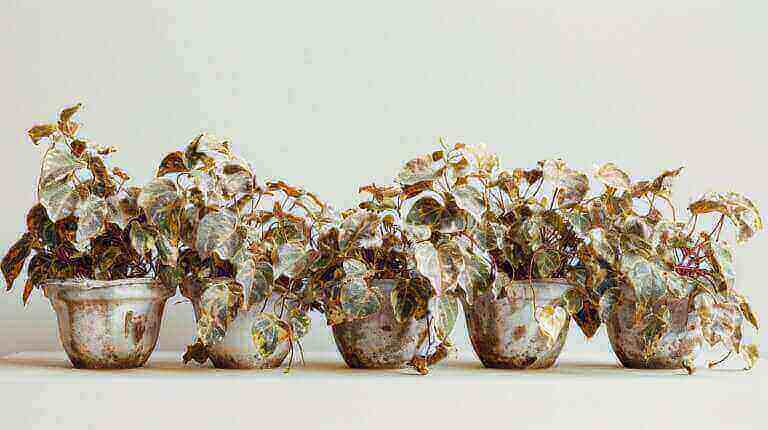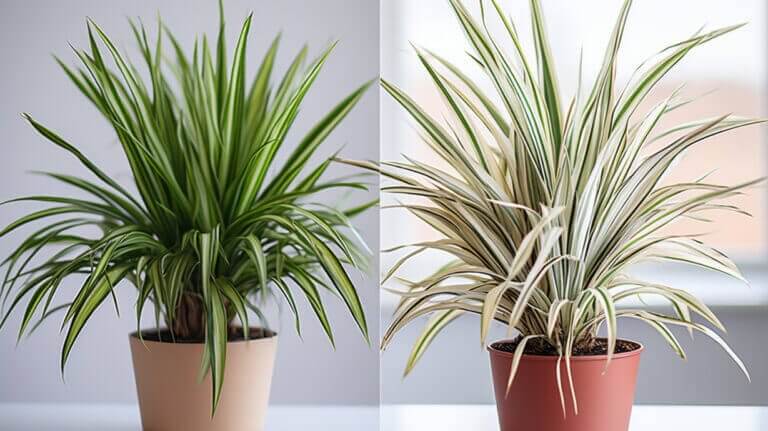How Much Fertilizer Does a Chinese Money Plant Need? Feeding Tips for Healthy Pilea Peperomioides Plant Growth
Key Takeaways:
- Chinese money plants require regular feeding with a balanced, water-soluble fertilizer during the growing season.
- Choose a fertilizer with a 3-1-2 ratio of nitrogen, phosphorus, and potassium for optimal plant growth.
- Dilute the fertilizer and apply it according to the package instructions to avoid over-fertilizing.
- Water the plant thoroughly after fertilizing to ensure nutrient absorption.
- Monitor the plant for signs of nutrient deficiencies or excesses and adjust the fertilizer application as needed.
How Often To Fertilize Chinese Money Plant
Here are some tips on how often to fertilize a Chinese money plant:
- During the active growing seasons of spring through summer, fertilize the plant every 2-4 weeks. This provides nutrients to support new growth.
- It’s best to use a balanced liquid houseplant fertilizer diluted to half or quarter strength. This prevents fertilizer burn.
- In fall and winter when growth naturally slows, reduce fertilizing to only once a month or stop completely.
- If using slow-release fertilizer pellets, apply only once per year in early spring according to package instructions.
- Flush the soil with plain water every 4-6 weeks to wash away any built up fertilizer salts.
- Look for signs of deficiency like yellowing leaves or stunted growth as an indication to increase feeding.
- Healthy, vibrant plants likely don’t need heavy fertilization. Avoid over-feeding.
- After fertilizing, mist the leaves to wash away any fertilizer residues.
- Repotting annually in fresh soil will provide some nutrients without over-fertilizing.
The ideal fertilizing routine is liquid feeding every 2-4 weeks during the active growing period, reduced to monthly or stopped in fall/winter. Flush the soil regularly to prevent salt buildup.
How Much Fertilizer Does a Chinese Money Plant Need?
The Chinese Money Plant, also known as Pilea peperomioides, coin plant, is a delightful houseplant with coin-shaped foliage. To keep it thriving, here are some care tips, including its fertilizer needs:
- Light: Place your Pilea peperomioides in medium to bright indirect light. Regularly rotate the plant to maintain symmetry. Avoid harsh, direct sunlight, as it can scorch the delicate leaves.
- Soil: Opt for rich, well-draining soil. A high-quality organic potting mix with peat or coir works well. Add perlite to enhance drainage and prevent waterlogging. Aim for a soil pH between 6.0 and 7.0.
- Water: Allow the soil to nearly dry out between waterings. When the leaves start drooping, it’s time to water. This plant has medium water needs.
- Temperature and Humidity: The average household temperature and humidity are suitable for Pilea peperomioides.
- Fertilization: During the growing season (spring and summer), use a liquid fertilizer specifically formulated for indoor plants. Look for a balanced fertilizer with an N-P-K ratio of 10-10-10 or 20-20-20.
Remember, this plant is also called the friendship plant because it produces plenty of offshoots that you can share with friends or propagate to create more plants. Happy gardening! 🌱🪴
Best Soil and Potting Recommendations for Chinese Money Plants
When it comes to the health and growth of Chinese money plants, choosing the right soil and potting mix is essential. These plants thrive in well-draining soil that allows excess water to flow freely, preventing root rot. Here are some recommendations for the best soil and potting mix:
- Well-draining potting soil: Chinese money plants prefer potting soil that provides good aeration and drainage. Avoid using garden soil, as it retains too much moisture. Opt for a high-quality organic potting soil based on peat moss or coir fiber and perlite. These materials promote healthy root growth and prevent waterlogging.
- Homemade potting mix: If you prefer to make your own potting mix, you can combine 4 parts of good-quality potting soil with 1 part of perlite or pumice. This mixture ensures adequate drainage for the plant’s roots.
It is also important to choose the right pot for your Chinese money plant. Plastic or glazed ceramic pots with drainage holes are recommended to prevent water from pooling. If using a terracotta pot, seal the inside with a spray sealant or use a plastic liner to minimize water loss. Repot the plant only when it outgrows its current pot, typically every 1-2 years, using fresh potting soil and a slightly larger pot to allow for growth.
Proper moisture levels are crucial for Chinese money plants. Regularly check the moisture level of the soil and water the plant only when the top 2 inches have dried out. Over-watering can lead to root rot, while under-watering can cause the plant to wilt. Use de-chlorinated tap water or rainwater to water the plant, allowing the water to sit out for 24 hours to dissipate chlorine. Adjust your watering routine as needed, taking into account factors such as temperature and humidity.
Table: Recommended Potting Mixes for Chinese Money Plants
| Potting Mix Ingredients | Benefits |
|---|---|
| Organic potting soil based on peat moss or coir fiber and perlite | Provides good aeration and drainage for healthy root growth |
| Homemade mix of potting soil and perlite or pumice | Allows for better moisture control and prevents waterlogging |
Light and Water Requirements for Pilea Peperomioides Plant
Sure, here are the light and water requirements for a Pilea Peperomioides plant:
Light Requirements: Pilea Peperomioides thrive in bright indirect light, can grow in filtered light, and will tolerate, but not prefer, lower-light spots. Consider an east- or north-facing window, several feet away from a south-facing window, or in front of a south- or west-facing window that’s covered with a sheer curtain. They don’t like low or medium light, but they do really well in bright indirect light.
Water Requirements: The Chinese Money Plant prefers to be watered once a week. However, it’s important to let the potting soil dry out between waterings to prevent root rot. If the leaves are turning yellow, it may be a sign that the plant is getting too much water. More sunlight also dries out the soil quicker, so water the plant more often than if it were in shade. Check the soil moisture every few days to see if the plant needs a drink.
Remember, each plant is unique and may have slightly different needs. Always observe your plant and adjust care as needed. Happy gardening! 🌱
FAQ
How often should I water my Chinese Money Plant?
The Chinese Money Plant prefers to be watered once a week. However, it’s important to let the potting soil dry out between waterings to prevent root rot. If the leaves are turning yellow, it may be a sign that the plant is getting too much water.
- Chinese money plants like consistently moist but not soggy soil.
- Check the soil before watering by inserting your finger into the top 1-2 inches. Water when it feels dry but before it gets completely parched.
- During the spring and summer growing season, water your Chinese money plant every 1-2 weeks. Water less frequently in fall and winter when growth slows.
- Water thoroughly until it drains freely from the drainage holes whenever you water. This ensures the entire root zone gets hydrated.
- The frequency will depend on factors like temperatures, humidity, sunlight, soil type, and size/age of the plant. Adjust as needed.
- If the leaves start drooping, it’s a sign your plant needs more frequent watering. Leaves may also yellow and drop if under-watered.
- Reduce watering if you notice wet soil several days after watering. Improve drainage if your plant sits in soggy soil.
- Newly repotted plants need more frequent watering while establishing new roots. Mature plants are somewhat drought tolerant.
The best way to determine watering needs is to check the soil and look for visual cues from your plant. Proper moisture is key for a happy money tree!
How do I propagate a Chinese Money Plant?
Propagating a Chinese Money Plant is easy. Look for baby plants that grow from the base of the mother plant. You can gently remove these and pot them in a pot with a drainage hole. Make sure to keep the new plant in indirect light as direct sunlight can cause the leaves to turn yellow.
When should I repot my Pilea Peperomioides?
You should repot your Pilea Peperomioides when the plant becomes root-bound, i.e., when the roots take up more than half the pot. Typically, this is every 2-3 years. When repotting, choose a pot that is one size larger than the current one.
How do I fertilize my Pilea Plant?
Fertilize your Pilea Plant once a month during the growing season (spring and summer) with a balanced houseplant fertilizer. Reduce fertilizing to every other month in the fall and winter. Over-fertilizing can cause the leaves to turn yellow.
How do I care for my Pilea indoors?
As an indoor plant, Pilea prefers bright, indirect light. It can adapt to lower light conditions, but the leaves may not be as vibrant. Rotate the plant every few days to ensure all sides receive light. Keep the plant away from drafts and sudden temperature changes.
What is a Pancake Plant?
The Pancake Plant is another name for the Pilea Peperomioides due to its round, coin-shaped leaves. It’s also known as the Chinese Money Plant, UFO plant, or friendship plant.







